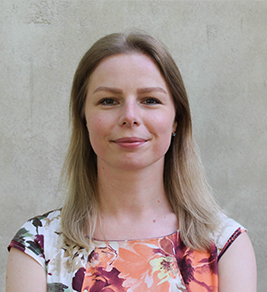The Nordic Region is widely known for its accessible and inclusive higher education systems. Yet beyond the traditional urban campuses lies a quieter, but equally important, transformation. In small towns and rural areas across the Nordics, higher education institutions are stepping into roles that go far beyond education – shaping labour markets, attracting youth, and becoming anchors for regional development.

The new research in the EDYNORA project explores how higher education institutions outside major urban centres are responding to local challenges and contributing to broader societal goals. Through six Nordic case studies, the report examines what makes these institutions succeed and what stands in their way.
More than education providers
“Higher education institutions in smaller towns and rural areas are much more than just providers of education — they wear many hats,” says Anna Berlina, Project Manager at Nordregio. “They serve as drivers of regional development, promote community cohesion, help reduce social inequalities, and deliver skills and competencies tailored to local labour market needs.”
One of the central insights of the study is the strategic importance of peripheral higher education institutions (PHEIs) in tackling regional disparities. Many rural and remote regions across the Nordics are grappling with youth outmigration, labour shortages, and a growing urban-rural divide. In this context, education emerges not just as a right, but as a lever for territorial cohesion and local vitality.
Strong collaboration among local governments, businesses, and education providers – often referred to as the “quadruple helix” – plays a critical role. In successful cases, municipalities are not just passive hosts but active co-creators, offering funding, shaping curricula, and aligning education with labour market needs.
The research also finds that hybrid and flexible models of education are key to ensuring access. In digitally connected Nordic regions, students can now pursue higher education without relocating – a major advantage for adult learners, families, and those balancing work and study.
However, Anna Berlina points out that physical spaces still matter: “Despite increased digitalisation, having a physical campus or a dedicated learning space was seen as especially important for community building, creating connections with local employers, and fostering relationships among teachers and students. Looking ahead, such spaces can take different forms… they may evolve into flexible 24/7 learning hubs that better accommodate the diverse needs of students.”
The barriers to success
Despite their potential, these institutions face several structural challenges. One of the most significant is the mismatch between national education funding models and the realities of small, place-based campuses. Institutions with fewer students or niche programmes are disadvantaged in systems where funding is tied to enrolment and research volume.
“The policy environment that peripheral educational institutions must navigate is reported as one of the largest obstacles,” the new project report notes. Even where decentralisation is politically supported, inconsistent commitments and changing priorities can disrupt long-term planning.
Additionally, these institutions often lack autonomy within larger centralised university structures. This can make it difficult to adapt quickly to local labour market changes or design programmes that respond to emerging regional needs.
Finally, some institutions depend heavily on a few key individuals or local champions. While this can be a strength in the short term, it introduces long-term vulnerabilities when leadership or political support changes.
Lessons for the future
The EDYNORA research offers valuable takeaways for policymakers and practitioners:
- Stable funding and long-term political backing are essential
- Collaborative governance models that empower local actors can make education more responsive and regionally embedded
- Both digital and physical learning environments must be developed in tandem to create inclusive, connected, and vibrant educational communities
“This research set out to examine the role of education in areas beyond major urban centres in addressing the urban-rural divide,” says Berlina. “Can education contribute to retaining and attracting young people? Can it boost the local labour market? We found that, under the right conditions, the answer is yes.”
As the Nordic countries continue to develop strategies for balanced regional growth, the role of education in smaller communities should not be overlooked. These institutions are not only teaching students – they are helping to shape the future of the regions they serve.



